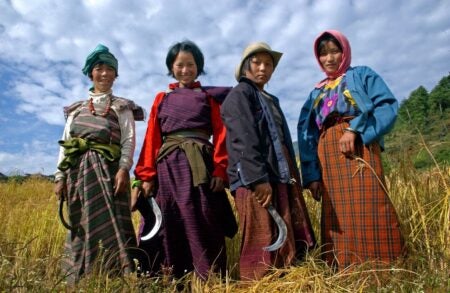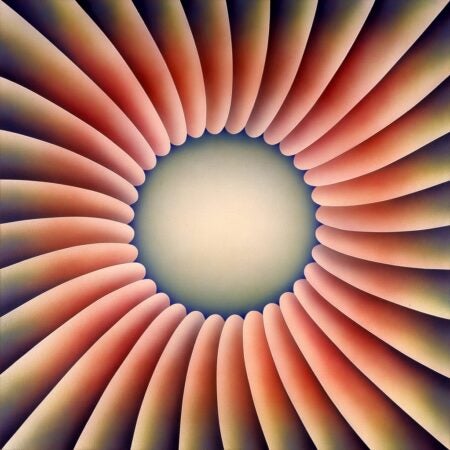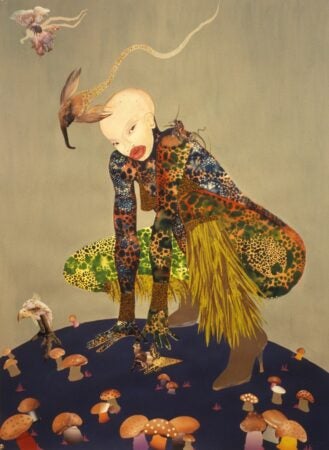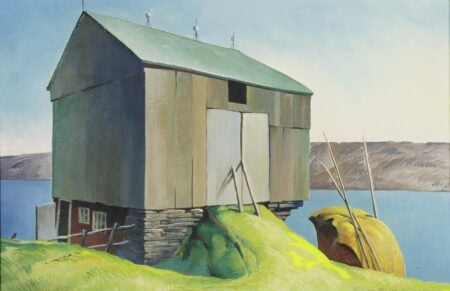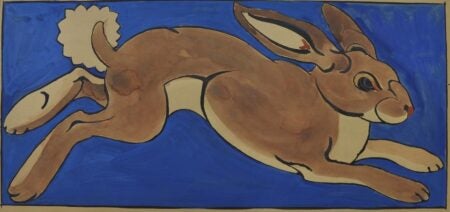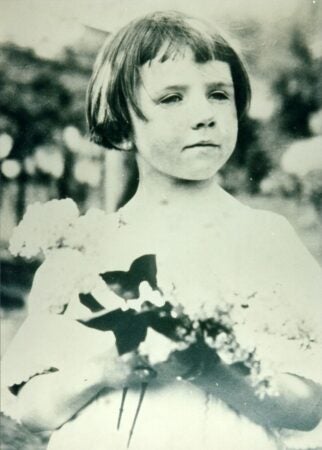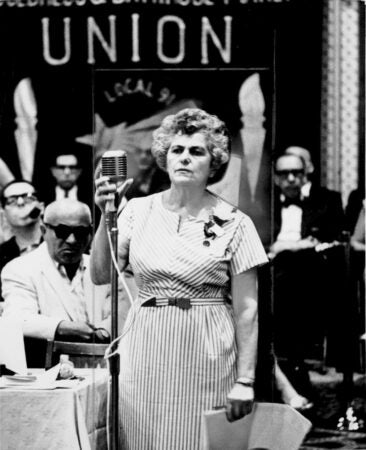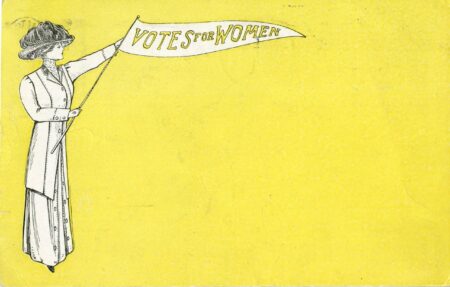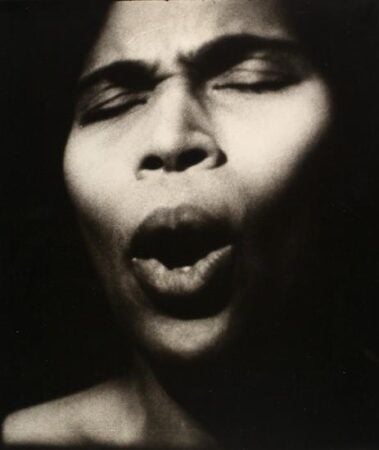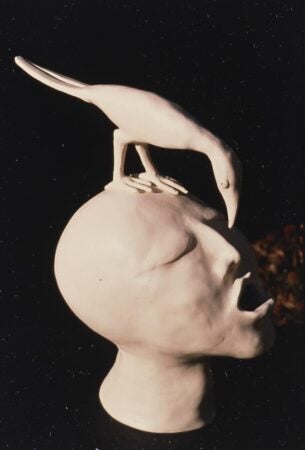Illuminate Women’s History Month with Artstor
In celebration of Women’s History Month we have compiled a list of image and primary source collections available in JSTOR, from licensed to freely accessible community-contributed collections.

Bain News Service. Woman suffrage pageant. May 191. Photograph. Image and data from Eyes of the Nation: A Visual History of the United States (Library of Congress).
We encourage you to explore the resources: photographic, graphic, and written accounts of the women’s suffrage, labor, and reproductive rights movements: the artistic output of female painters, sculptors, architects, designers, and craftswomen; the work and lives of women in science; photographs of women and by women, including a wide selection of portraits of literary luminaries, as well as of communities of women around the globe.
- Ami Vitale. Women harvest rice paddy…2005. Photograph. Image and data from Panos Pictures.
- Judy Chicago. Through the Flower, 25/100. 1991. © 2021 Judy Chicago / Artists Rights Society (ARS), New York.
- Wangechi Mutu. Riding Death in My Sleep. ink and collage. Image and data from Wangechi Mutt.
Shared Collections
Freely accessible primary source materials contributed by partner institutions at universities, libraries, museums, and organizations around the world.
Collective histories:
- Suffrage Journals, London School of Economics and Political Science (948 items, multi-paged) – Archives of two journals related to women’s suffrage in England. The Common Cause was published by the National Union of Women Suffrage Societies from 1909-1920 with the explicit goal to “promote the claim of Women to the Parliamentary Vote on the same terms at is it or may be granted to men.” Votes for Women, published by St. Clement’s Press from 1907-1918, became the official newspaper for the Women’s Social and Political Union and, later, the United Suffragists, with a print circulation of over 30,000 issues. Both of these journals documented the activities of major suffrage groups and included sections dedicated to news, op-eds, and advertisements.
- The Woman Teacher, University College London Special Collections (1,009 items, multi-paged) – Published from 1919 to 1961, The Woman Teacher was the official publication of the National Union of Women Teachers representing female school teachers throughout Great Britain. The publication began as a recruitment tool and to support existing members in their fight for equal pay and better working conditions while also lobbying Parliament for educational reforms and advocating for female representation within the education system. Back issues include letters and notes from editors, articles written by members, meeting notes, reports from the NUWT’s branches around the country, advertisements, and notices about events and membership.
- Woman Suffrage Collection, University of San Francisco (343 images) – The collection consists of correspondence, photographs, and ephemera belonging to Dr. Clara W. MacNaughton (1854-1948) and her daughter, Marie MacNaughton Davis. Involved in the Woman’s Suffrage Association of the District of Columbia, the Federal Woman’s Equality Association, the National Woman’s Equality Association, and the Federal Suffrage Association, MacNaughton first became involved in the suffrage movement in Grand Rapids before moving to Washington, D.C. This collection includes correspondence between MacNaughton and suffrage leaders such as Olympia Brown and Belva Lockwood, as well as photographs and images.
- Women’s Suffrage and Equal Rights Collection, Claremont Colleges (216 documents and images) – This wide-ranging collection includes postcards with illustrations and cartoons related to the suffrage movement, photographs of suffrage leaders such as Carrie Chapman Catt, and badges worn by suffragists. The collection also contains many text-based primary sources such as a copy of Objections and Answers, a 1917 text published by Alice Stone Blackwell responding to anti-suffrage arguments, an open letter written by Harry Gamble to Senator Joseph E. Ransdell opposing women’s suffrage, and a 1914 report from the Women’s Social & Political Union.
- North Wales Women’s Peace Pilgrimage, Bangor University (1 scrapbook) – This collection is just one item: a scrapbook that documents a 1926 march from Wales, Scotland, and Northern England to Hyde Park in London to advocate for peace and diplomacy in a post-WW I world. Begun as a response to the League of Nation’s World Disarmament Conference, the women involved in the march represented more than 28 organizations, including Women’s International League for Peace and Freedom (WILPF). Thousands of meetings were held by members of this group and others during these marches, with the scrapbook including pamphlets and documents distributed by women involved in the event, press clippings, maps of the various routes taken on the march, and photographs. The event is referenced in The Woman Teacher as well and is described as a “spectacular endeavor.”
Individual surveys:
- Bonnie Cashin Collection: University of Cincinnati (811 images) – This collection comprises over 200 garments designed by Bonnie Cashin while she worked with Phil Sills from 1960-1980. Cashin (1915-2000), a pioneer in women’s sportswear, is perhaps best known for her innovative work in leather, her use of vivid color and heavy hardware, and her Asian-inspired approach to layering.
- Etta Winigrad Sculptures: University of Pennsylvania (370 images) – This collection of photographs of Etta Wingrad’s (b. 1936) sculptures provides a survey from the early 1970s through 2016. Winigrad’s oeuvre features kiln-fired ceramic pieces that combine figurative and fantastical elements that center on the human condition, both whimsical and serious.
- Marian Anderson Collection of Photographs, University of Pennsylvania (4,336 images) – A collection of more than 4,000 photographs of Marian Anderson, one of the most famous opera singers of the 20th century and the first African American soloist at the Metropolitan Opera. Anderson toured worldwide for decades, served as a US delegate to the United Nations, and received the Presidential Medal of Freedom in 1963. The collection includes photographs of Anderson performing over the course of her career, meeting with notable individuals including John F. Kennedy, Lyndon Johnson, and Eleanor Roosevelt, and receiving awards and honorary degrees.
- Nancy Elizabeth Prophet Collection: Rhode Island College (61 images) – Nancy Elizabeth Prophet (1890-1960) was an American sculptor of Native American and African ancestry noted for her work in Paris during the 1920s and 1930s. She was the first woman of color to graduate from the Rhode Island School of Design. Images include photographs of the artist and her sculpture.
- Collection on Rachel Carson: Chatham University (64 images) – Photographs and documents from the life of the groundbreaking environmentalist (1907-1964) provided by her alma mater.
- Alison Mason Kingsbury: Life and Art: Cornell (522 images) – Paintings, murals and graphic work from the Ithaca-based artist (1898-1989), including Regionalist landscapes of the Finger Lakes.
- International Ladies’ Garment Workers’ Union Photographs: Cornell (1,077 images) – Founded in 1900, the ILGWU represented workers in the women’s garment industry, improving the working and living conditions of its members. Photographs document the workers, the shops, and the factories, as well as the union.
- Ruth Laxson Artist Book Archive: RISD Library Special Collections (141 images) – This collection presents the innovative artists’ books made by Ruth Laxson, painter, sculptor, and printmaker (1924-2019).
- Alison Mason Kingsbury. Lonesome barn. 1930. Oil. Image and data from Cornell University.
- Alison Mason Kingsbury. Hare (painting for Texas mural. 1926. Watercolor. Image and data from Cornell University.
- Unknown. Rachel Carson … c. 1910. Photograph. Image and data from Chatham University – Collection on Rachel Carson.
- Unknown. Rose Pesotta addresses … the 1965 ILGWU convention. Photograph. Image and data from Cornell University.
- Unknown. Six women including Mary Dreier, Ida Rauh, Helen Marot, Rena Borky, Yetta Raff, and Mary Effers…during the shirtwaist strike. 1909. Photograph. Image and data from Cornell University.
Artstor Licensed Collections
A wide range of subscription-based, multidisciplinary content from leading museums, artists, libraries, scholars, and photo archives. In addition to the targeted collections below, there is ample content relating to women throughout many of the general collections in Artstor.
- Abby Williams Hill Collection (University of Puget Sound) (124 images) – Paintings and graphic works, mostly landscapes, by the Tacoma-based artist, writer, and activist Abby Williams Hill (1861-1943).
- Georgia O’Keeffe Museum (833 images) – A survey of O’Keeffe’s (1887-1986) output — paintings, drawings, and sculpture dating from 1901 to 1984 — including her most recognized works: abstracted, magnified details from nature.
- Howardena Pindell (20 images) – Mixed media works by Pindell (b. 1943), who explores issues of racism, feminism, violence, slavery, and exploitation through abstraction.
- Judy Chicago (367 images) – Work by the influential artist, writer, and feminist (b. 1939), including The Dinner Party, along with individual works and other collaborations such as the Birth Project (1980-1985), Powerplay (1982-1987), Holocaust Project (1985-1993), and Resolutions: A Stitch in Time (1994-2000).
- Magnum Photos (96,020 images) and Panos Pictures (35,017 images) – Historical and contemporary photojournalism that features images of and by women.
- Rebecca Hackemann (215 images) – Work by the conceptual German/British artist, writer, and professor, including varied photographic techniques, drawings, and public art.
- Pacita Abad Art Estate (500 images) – A survey of the work of the prolific American-Philippine artist (1946 – 2004) who brought her global travels to her practice, which included paintings, hand-stitched trapunto works, abstract textile collages and assemblages, ceramics, and public works.
- Schlesinger History of Women in America Collection (Harvard University) (35,985 images) – Archival photographs of women in the service of the suffrage movement, defending their rights, in the workplace, the arts — with contributions by female photographers.
- Wangechi Mutu (101 images) – Kenyan/American artist Wangechi Mutu (b. 1972) provides a perspective on pressing social issues, including gender in collages, paintings, sculpture, and installations, 2002-2013.
- A. Hadden postcard to Alice Park. 1909. [Postcards]. Image and data from Claremont Colleges Digital Library.
- Marian Anderson. 1954. Photograph. Image and data from UPenn Marian Anderson Open Community Collection.
- Etta Winigrad. Waiting. 1989. Clay. Image and data from the University of Pennsylvania.
